I love reading about how people learned their craft, whatever it may be. In particular, I enjoy sewing stories, as that is where my craft story begins. My tale is stitched together with love, memories, and a chronicle of the times. It doesn’t begin, however, with a daughter learning about the craft next to her mother’s or grandmother’s knee. I had a junior high school friend who probably learned how to sew that way, and she eventually wrote sewing books and became a guest instructor at a quilting workshop hosted by Nancy Zieman of the “Sewing with Nancy†program on Wisconsin Public TV.

My own story has a much humbler beginning at the one-and-only Girl Scouts meeting I attended during grade school. Why a single meeting? It took place at a public school, and my mother—who grew up in World War II Germany where you had to pay for everything, from using a public bathroom to taking books home from the library—believed from the bottom of her heart that if something took place on American public school grounds, that meant it was free. America, the land of the free and the home of the brave, just as “The Star-Spangled Banner†promises. Not free? It wasn’t meant to be! But the one day I attended a Girl Scouts meeting, when I discovered we had to pay weekly dues, the girls learned how to hem bandanas.
“Your daughter is going to be a good sewer,†the Girl Scout leader told my mother, as she pointed out the even spacing between my stitches.
Those words were exactly what my mother, who hated sewing, needed to hear. “I’m not very good at it,†she told me later.
She related a story about some yellow curtains she stitched during sewing class when she was a young girl. All of her fellow students finished curtains they were proud to gift to their mothers or hang up in their bedrooms, but my mother’s curtains were shorter on one end than the other, and the hand stitching was visibly ragged. Many years later she crossed the Pond to visit her mother in Germany, and was horrified to see those yellow curtains hanging up in the kitchen.
“Why do you still have those miserable things?†she asked her mother.
“Because you made them, dear.â€
I was reminded of my own answer to our son when he asked me why I kept his earliest handmade Christmas ornaments. If it was left up to him, they would be memories long relegated to the weekly curbside trash collection. But every December when he comes home for Christmas, I hang them up on the tree.
Needless to say, my mother was delighted to turn over to me the task of darning my father’s and brother’s socks. I don’t think many people darn anymore, but you can still find a darning egg at JoAnn.com for $9.99, and I found several vintage varieties on Etsy. Nonetheless, I’m proud to say I can darn a mean sock. I used a two-sided plastic darning egg with a handle on the end—red for light socks, and white for dark socks. Darning is really nothing more than weaving with a needle. The darning egg provides the fabric support, but your sock is the loom, in a sense. The threads going in one direction provide the warp, and your threads going in the other direction represent the weft, or weaving thread.
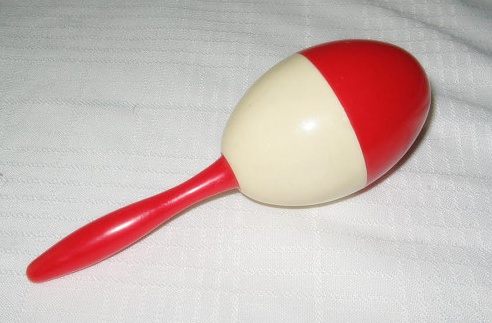
I remember summers when I sliced through a stack of trousers that my brother, Mark, had outgrown, with instructions to cut them off at the knee and hem them into shorts. When anyone’s shirts or blouses had loose or missing buttons, my mother handed over her sewing basket and a glass coffee jar, filled with buttons. I didn’t mind; from the earliest days I enjoyed working with my hands. Today, I have my own jars filled with buttons, as well as the sewing basket she left behind when my mother passed away.


I was introduced to machine sewing in a required 7th grade home economics class, when all girls learned how to read a pattern and thread a Singer sewing machine. We practiced stitching over inked lines on mimeographed sheets of paper before we graduated to fabric. Our first project was a checked gingham fabric half-apron, embellished with rick-rack trim. We were given a shopping list of sewing supplies that had to be kept in a clear plastic shoe box in the classroom. My mother, of course, had forgotten—probably by choice—the difference between a sewing gauge and a seam ripper, so I went shopping with my father. He was a tool-and-die maker, and to him a sewing machine was just another workshop tool. The next class project was a gray kettle cloth jumper, not a British jumper that’s really a pullover sweater, but instead a sleeveless, shapeless dress with basic bust darts and a center-lapped zipper down the back. I don’t have photos of these earliest efforts, but I’m sure you can find one in Amy Barickman’s book, Vintage Notions. These garments of the early 70s are today’s definition of retro.
Even though my mother did not enjoy sewing, she was eager to encourage my efforts. She enrolled me in a summer sewing class at Gimbel’s Department Store back in the days when most major department stores had fabric departments. Although Gimbel’s, once the largest department store chain in the U.S., is no longer in business, I worked there as a “flyer” during my college years, serving customers in a different department every time I showed up to work. Unlike my home economics class, where we had relatively little freedom to choose a project, we could sew anything we wished during this class. I wanted to learn how to insert sleeves and a lapped zipper, so I made myself a pink empire-waist dress with a fitted lace insert, puffed three-quarter length sleeves, a faced neckline, and a lapped zipper. My father bought the first family sewing machine, a Brother machine that we learned how to thread together and that he later used to mend garments long after I had moved on to college, married and moved away.
During my high school and college years, there was little time for sewing, other than mending, but when my then-boyfriend, now-husband, John, attended the University of Wisconsin-Madison on a Navy ROTC scholarship, I was invited to partner him at the annual Naval balls. It was much more affordable to sew a long dress than to buy one, but the first time I had to tackle such a big project I needed some help. John’s roommate’s girlfriend, Holly, helped me pin the pattern pieces, cut them out and sew the dress. This helped me to develop the confidence to make future ball gowns and, eventually, my own wedding dress and veil.
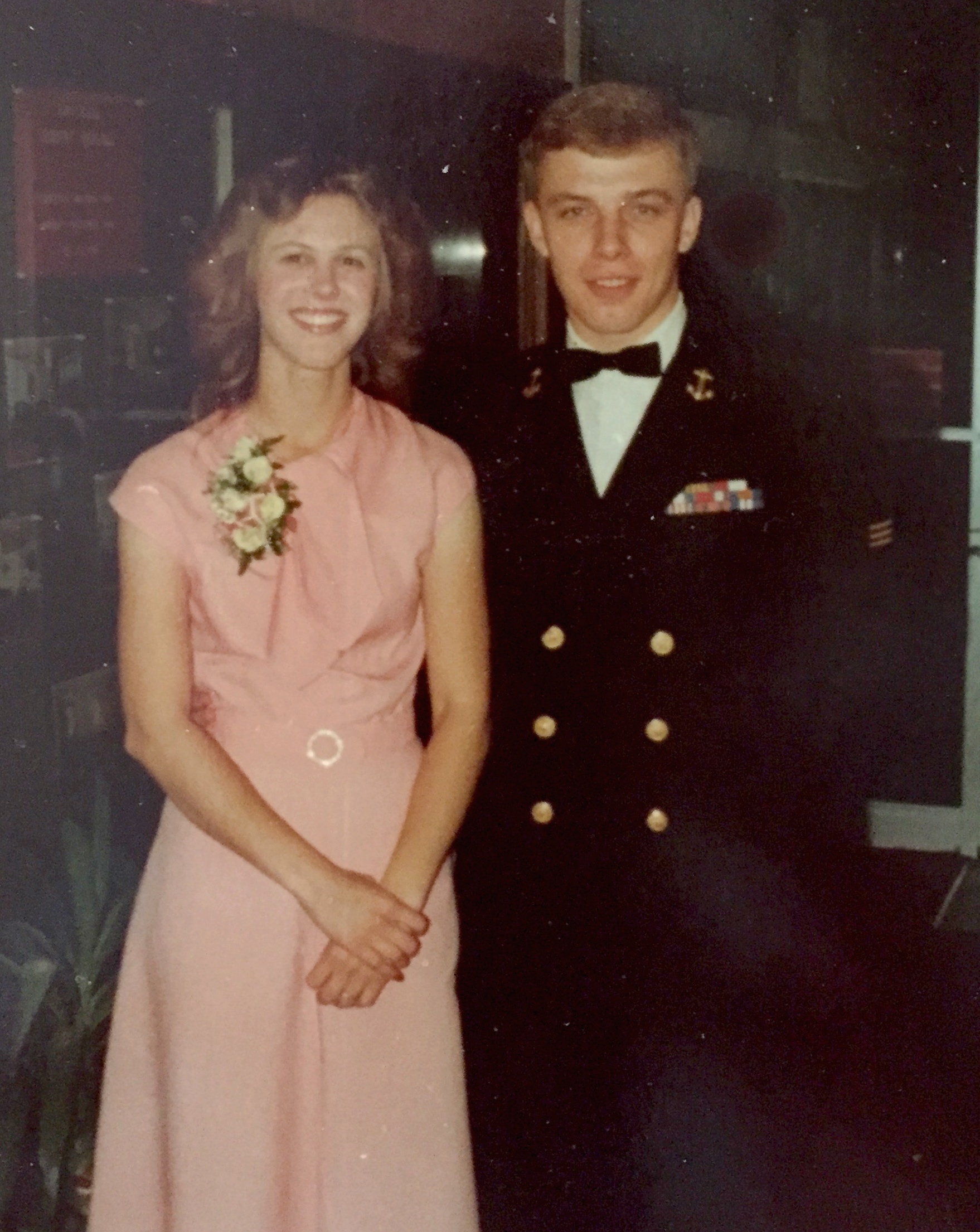
When I began working at a publishing company after college graduation, I used some of my earnings to buy my own Singer sewing machine that featured removable cams for different kinds of stitches. Cams, for those of you who are unfamiliar with them, preceded built-in digital stitches in electronic sewing machines.
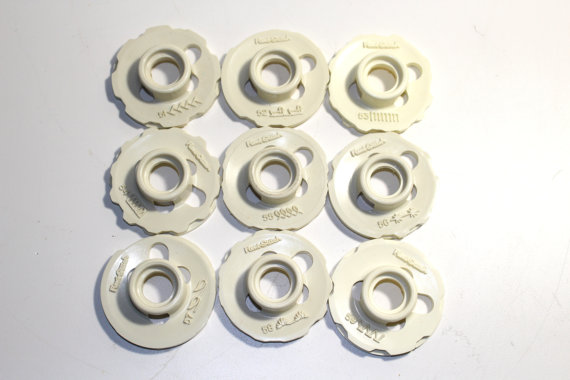
It was John, who loves gadgets, who urged me to trade in my Singer sewing machine for a digital Pfaff machine. We were strolling through a local mall at the time, when he stopped before a window display that sported a sewing machine with a scrolling message that announced, “Hello. I am the Pfaff 1471.†John grabbed my arm and pulled me through the doorway of the shop. The next thing I knew, I owned a new sewing machine that churned out dresses and skirts, play clothes and Halloween costumes for our son, and family gifts such as aprons, pillows and pillowcases, pot holders, bed caddies, Christmas tree skirts and stockings, and much more.
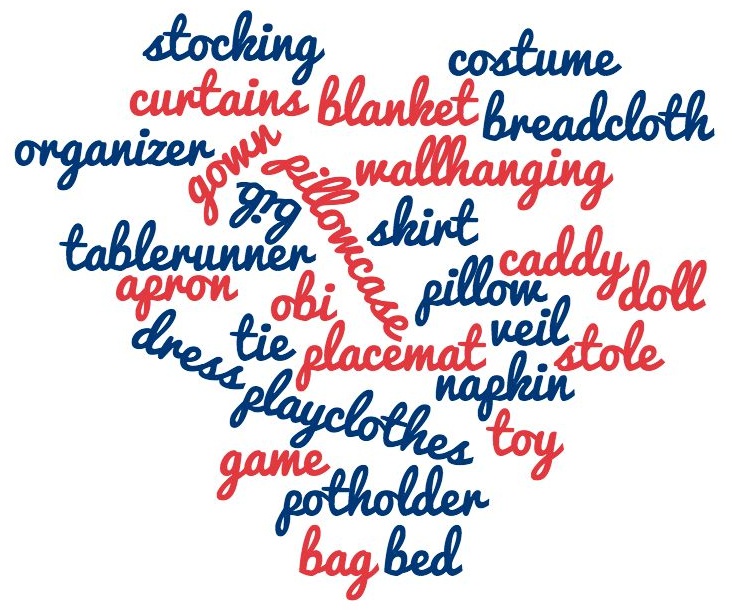 That Pfaff sewing machine was a faithful companion for more than a decade until the day we visited Nancy’s Notions in Beaver Dam, Wisconsin—yes, that same Nancy who still hosts a television show on Wisconsin Public TV. While I was fabric-shopping, John was upgrading me to a Pfaff Creative 7530. This one sews without human intervention. Well, almost. I did mention, didn’t I, that John is my Gadget Man?
That Pfaff sewing machine was a faithful companion for more than a decade until the day we visited Nancy’s Notions in Beaver Dam, Wisconsin—yes, that same Nancy who still hosts a television show on Wisconsin Public TV. While I was fabric-shopping, John was upgrading me to a Pfaff Creative 7530. This one sews without human intervention. Well, almost. I did mention, didn’t I, that John is my Gadget Man?

We sold the old machine, but I still have that Pfaff Creative 7530 today, with lots of extra accessories. But about six years ago, John decided it was time for me to have an embroidery machine. You guessed it; he bought me a new Pfaff sewing machine, but this time the shop owner convinced me that I should keep the other machine so that I could have multiple projects going on at the same time. Since that’s my nature, anyway—to have my fingers in many proverbial pots simultaneously—I was pretty easy to convince. Both sewing machines now sit in a nursery-sized bedroom that is just large enough for two projects at one time. The other projects spill into the kitchen, and onto any horizontal surface I can find. If you sew, I’m sure this sounds familiar. Sewing does not lend itself to neatness. Never say never, but I believe my last sewing machine is really the last sewing machine that John will buy. We’ve run out of space.
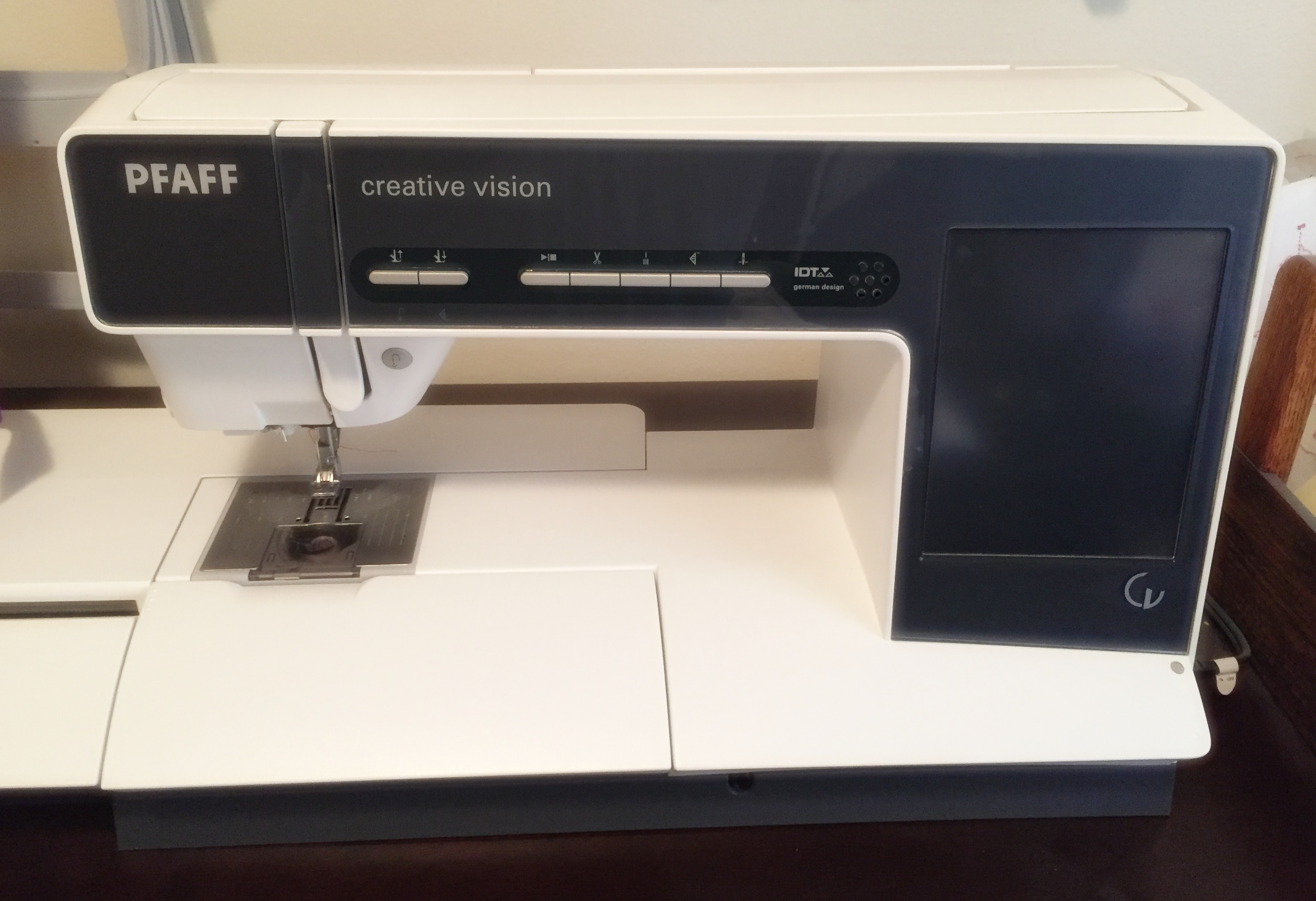
One of the things I have discovered about sewing is that it’s a community—whether a friend is helping you lay out pattern pieces and interpret the instructions—or you are participating in the online version of an old-fashioned sewing bee, such as the Bag of the Month Club in which I have participated during the last few years. Sewists share photos of completed projects on Facebook, Pinterest, Instagram and blogs; participate in blog hops, and meet in local library conference rooms, school classrooms and church meeting rooms to quilt, chat and snack. They discuss handy sewing techniques and recommend notions to each other while standing in the fabric store aisles, becoming fast friends on the fly. At one of the first jobs I worked at in southern California, during our first year of marriage, an instant bond grew out of a shared love for sewing when my co-worker presented me with a pin cushion she embroidered by hand, well-loved, worn, and still sitting in my sewing room.
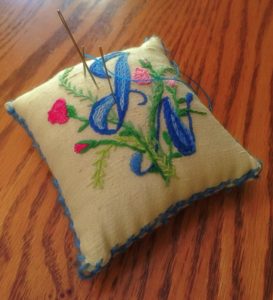
Over the years I shared my passion for sewing with others by imparting a small part of my knowledge. Like many sewists, I worked part-time as a clerk in a fabric store—at Cloth World in southern California, and at So-Fro Fabrics (that eventually became JoAnn Fabrics) in Iowa—where I helped customers choose fabrics and notions, and I recommended sewing techniques. I taught my homeschooled neighbor’s daughter how to sew, and she turned that knowledge into a sewing business for herself while she was still in middle school. When I managed an all-boys’ Destination Imagination (creative problem-solving) team for my son and his middle school friends, I taught them how to thread a machine, stitch a straight line, and join fabrics. As a result, the boys were able to help each other design and sew their own costumes.
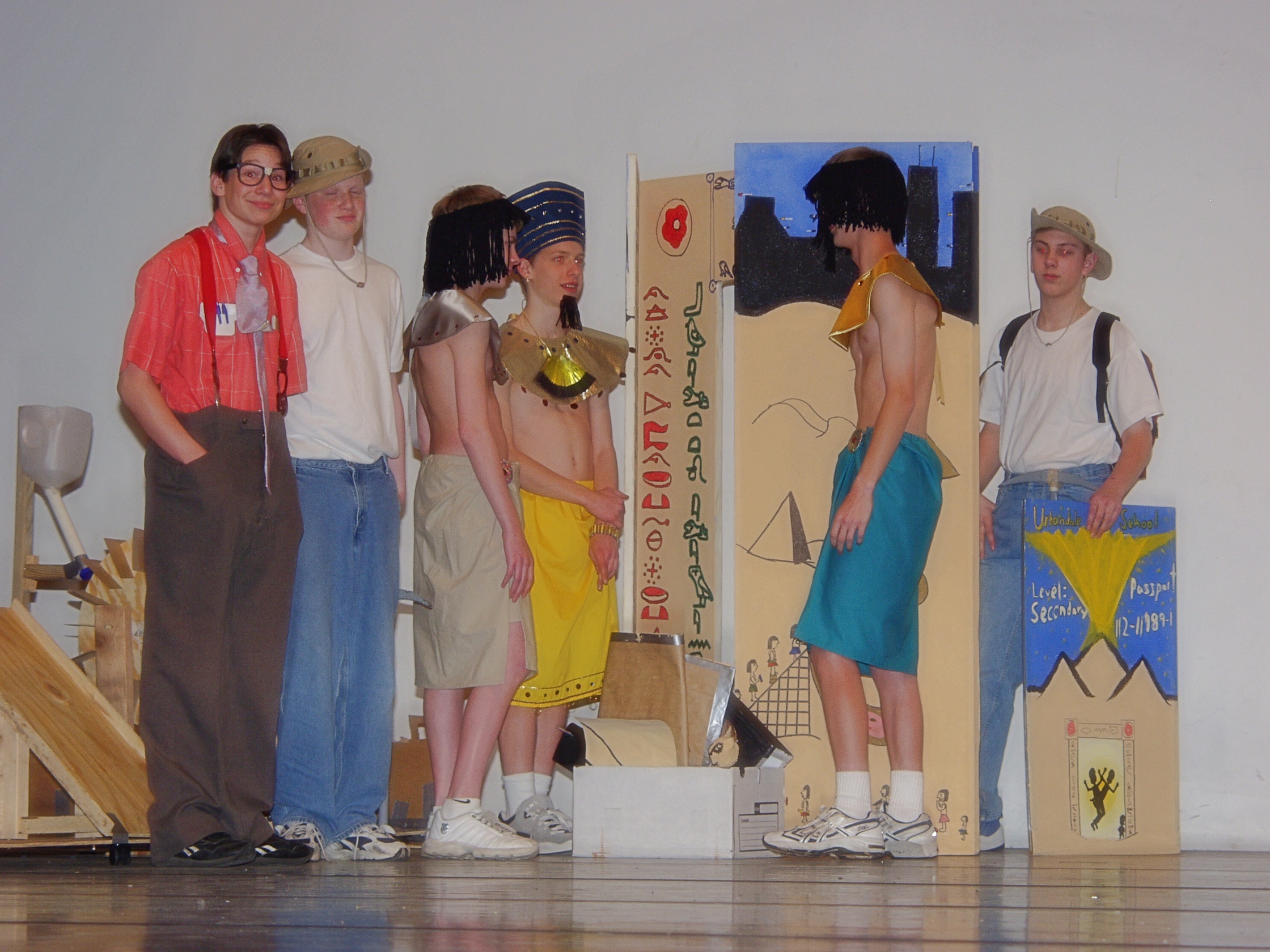
My son used that same sewing knowledge to sew a costume for National History Day competition, and today—as an adult—he designs and sells medieval-style leatherwork pieces that he stitches by hand. He, too, has a Pfaff sewing machine—carrying on the family tradition—that he has used to sew period clothing.
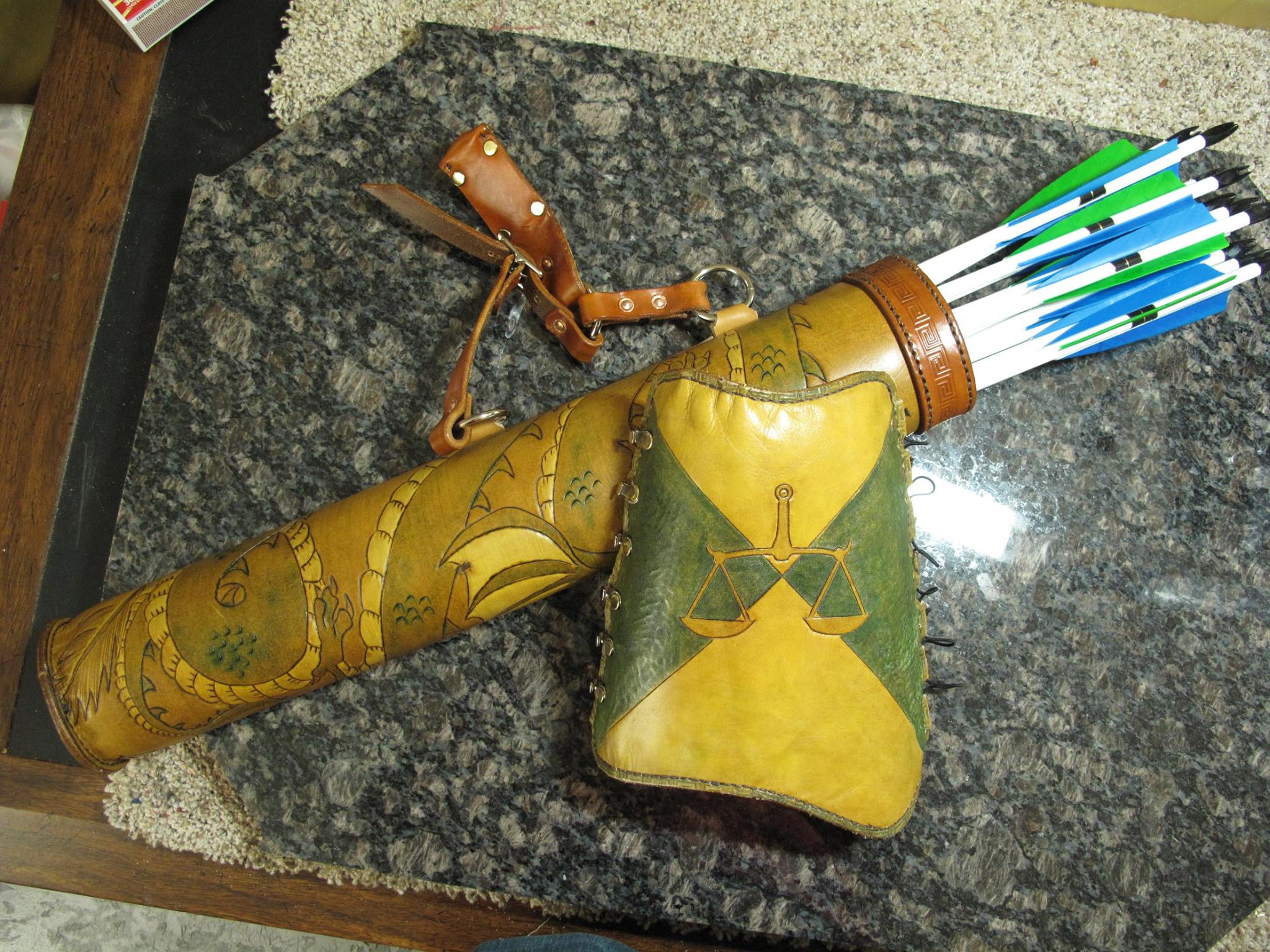
Sewing is so much more than a skill you pass on to the next generation. Both the time you spend with others and the items you produce are gifts of the heart, building memories that will last far into the future. Although my mother claimed to have no skill in sewing, I have a four-year-old’s memory of her snipping off a final thread from a doll’s dress as she removed it from the bed of a treadle machine and handed it to me. Sewing binds us together with every stitch, imperfect or not. In the comments below, feel free to share your sewing story.
© 2016 Judy Nolan. All rights reserved.


So many parallels to my own sewing journey! 4-H, required home ec classes, and a Singer Touch and Sew, which served me well for over 20 years! I am excited to see more younger “sewists” and Modern Quilt enthusiasts in their 20s and 30s – — I believe this craft will survive and thrive after all!
Wonderful memories. Forgot about those days when Macy’s, etc sold patterns and fabrics. I started when I was about six. My girlfriend had a tiny sewing machine about 6″ high. We would sew doll clothes – we did this by laying the doll across the fabric cutting around the doll and stitching it up! I used this same technique in college when we were all wearing those long “hippie” Indian fabric skirts – we would lay on the fabric and cut our the size needed.
Thanks for sharing your lovely memories, brought back some of mine to me, even those days of earning our Girl Scout badges!!
Oh my goodness! What fun to read your sewing story – and to see so many similarities to my own! I loved watching the Sewing with Nancy show. My mom and grandmother taught me the basics of sewing before I was in school and Mom gave me my first sewing machine – my other grandmother’s Singer treadle sewing machine. Many years later, I bought a Pfaff, too – and a second one when I wore that one out. LOL Thanks for the great blog post that brought back so many memories!
What a great story! The funny thing is, I absolutely didn’t want to learn how to sew when I was growing up. My mom tried to teach me and I refused! (Well, I did some basic hand sewing but nothing by machine.) I taught myself in college when I realized I couldn’t just walk down the hall and ask my mom for whatever I wanted. The part about the ornaments really resonated with me – my dad never wanted to throw away any ornaments made by anyone at any point in the past! It usually made my mom a little crazy. Great post (and your son’s quiver is super cool, too!).
What an inspiring “sewing” story, Judy! My maternal grandmother was great at sewing by hand and luckily her sewing gene got passed on to me. Btw, my mother hated sewing, especially hand sewing as well 😉 The dress you made for your engagement is stunning and I’m impressed that you made your own wedding dress as well! I agree that sewing is here to stay. In fact, according to stats, sewing is listed at the top of favorite hobbies of females aged 13 – 45. I had Pfaff before, but now use Janome.
I wish our home-ec class would have taught sewing. My mom didn’t sew either, so I never really learned. A friend’s mom did help me make a pair of shorts one year for 4-H, but I don’t think I’ve sewn anything since!
I love how you told your story of how you started sewing and how it took you through the years 🙂
Thanks for sharing!
My mother was a great sewist. She made me smocked dresses and even a coat! We would do some sewing projects together, making formal and semi-formal dresses for dances I attended. She did enroll me in a sewing class at one point when I was young–middle school age maybe. I was the youngest person in the class, which was daunting to me.
I used to sew a lot more, but then basically stopped. In the last couple years I’ve become interested again.
When my daughter was in Girl Scouts in 7th grade, they each sewed an outfit. The girls went to a store and chose a pattern and fabric. They would work on the outfit at every meeting. This took quite a long time, perhaps half a school year.
Oh, and my son had a 1/3 year class in middle school where they did home ec things, including sewing a pillow.